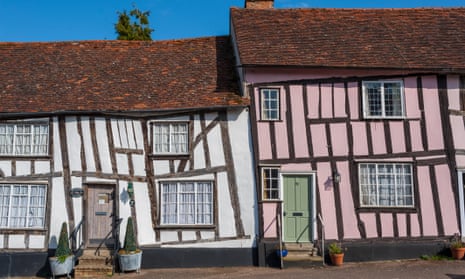‘Thank God for Lavenham,” writes Andrew Lloyd Webber in his new memoir. The composer says that, as a depressed 15-year-old, he bought painkillers and a one-way ticket to the end of the London underground, then a bus to the former wool town. It was the beauty of Lavenham’s buildings and its Grade I-listed church that saved him from thoughts of suicide.
Fans of musicals have got this beautiful village in the heart of Suffolk to thank for Aspects of Love and Cats. But what makes it so good?
Architecture
The Guardian has called Lavenham “one of the most beautiful small towns in Britain”, and not without reason. Almost every building in the centre of the village is a timber-framed slice of history. In The Buildings of England, Pevsner describes John Wastell’s 1525 gothic church as “the perfect picture” and notes that “for houses in towns and villages, there is nothing in England to beat Lavenham in numbers and variety”. The parish council has even sought Unesco world heritage status. The result is a deluge of charm – albeit a deluge that is offset by jealousy that you don’t live there; which is itself followed by spurious fantasies about dropping everything and moving here.
History
The wool trade made Lavenham one of the richest towns in medieval England, but you probably know it for its role in Stanley Kubrick’s Barry Lyndon and, er, Lovejoy. The house that doubled as Harry Potter’s birthplace in the films is on sale for just under £1m. Meanwhile, fans of student favourite Mr Nice will also be pleased to discover that Howard Marks was captured at the 15th-century Swan hotel in 1980. We’re still waiting for a blue – or green – plaque.

Community
When I visited Lavenham in 2011, it was the weekend of the Duke and Duchess of Cambridge’s wedding. Lured there by no other reason than a bank holiday offer at the Swan, we found ourselves with nothing to do but head to the village square, which had been cleared for a big-screen bunting-based extravaganza. Thanks in part to the Richard Curtisian Englishness of it, but mainly to the friendliness of the locals (and the booze pouring out of Marco Pierre White’s Angel pub) even this lifelong republican was won over. Lave changes everything, I guess.

Comments (…)
Sign in or create your Guardian account to join the discussion